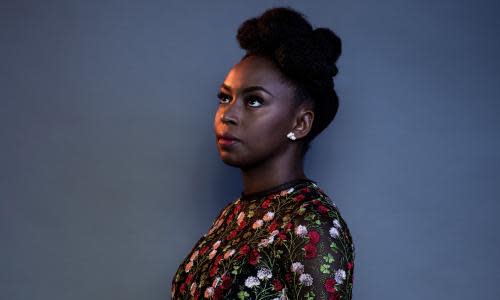Half of a Yellow Sun is a masterpiece in balancing truth and fiction

Last year, Chimamanda Ngozi Adichie gave the inaugural Gabriel García Márquez lecture and spoke about truth and storytelling. “To start a story, a true story, thinking of balance is already to place an obstacle in the path of that story,” she said. “Because what one must focus on is not balance, but truth.”
Those who have lamented the failures of the BBC over the past few years will understand this point only too well, but I’d still recommend listening to this lecture. It’s moving and impressive to hear Adichie make her points so forcefully and eloquently – and a worthwhile reminder of the curious fact that the people who offer us the best insights into reality are often novelists, rather than reporters.
Adichie herself is a case in point. Among other things, Half of a Yellow Sun is one of the great truth-telling novels. Both in Nigeria and around the world, it was many people’s introduction to the Biafran conflict. It has helped hundreds of thousands of people understand a situation that has been largely forgotten, while telling a story that feels truthful – but is also clearly a work of fiction.
It’s here that the definition of truth becomes complicated. We accept that fiction tells us the truth, even if that’s a contradiction in terms. We all understand what Hemingway meant when he explained how he produced fiction: “All you have to do is write one true sentence. Write the truest sentence that you know.” It doesn’t matter that Papa sat there and made things up. There’s a different kind of truth to be found in how he describes the downhill rush of skiing, the taste of Spanish red wine, or how it feels to know you’ve lost the love of your life.
Yet, this idea does also have obvious complications. We have to do some internal calculations to work out exactly where that truth lies. Hemingway’s short stories are different to his journalism, for instance. His novel about an old man catching a mythically huge fish has a different relationship to historical events than his novel about the Italian front in the first world war. If you want to know the moral truth about the pompous cruelty of fascists in Italy in the early years of Mussolini’s reign, I’d recommend reading his short story about travelling through the country, Che Ti Dice La Patria – just don’t go there for the cold facts and stats.
We feel such gradations of truth instinctively when we read, so much so that it seems almost redundant to try to sift through these differences in this way. But every so often, a book tests our instincts and makes us investigate our feelings about truth and reality more deeply. Half of a Yellow Sun is one of those books.
On a factual level, this novel has deep roots in the events of 1967 to 1970. Adichie drew on first-hand eyewitness accounts from her parents and close family, friends and compatriots who were involved in the Biafran conflict. She researched books on the war for years (even though they could be “boring”) and says that almost every single incident in the novel is based on something real. That adds an extra frisson of horror to descriptions of incidents like the one where a woman shows Olanna a bag containing her little girl’s head and says: “Do you know it took me so long to plait this hair? She had such thick hair …” Or the horrific descriptions of hunger and desperation at refugee centres, the rapes and the murders.
At the same time, facts are not Adichie’s main concern. She doesn’t get much involved in debates about the numbers killed by the famine the war brought, the political manoeuvres of the various powers who helped arm fighters on both sides. She doesn’t state the kind of truths that would go into an encyclopedia article on Biafra. She shows instead the things that her characters see and feel. It’s deliberately one-sided and narrow in its focus. There’s no false pretence at balance.
So it is that we learn as much about the flavour of pepper soup, or the way dust motes swim in the sunlight, as we do about facts and figures. We learn more about what it means to find yourself fighting for your life. To be so brutalised by conflict that you can be involved in a gang rape. To be hungry enough to eat rats. To not know where your sister is, but know enough that she almost certainly isn’t coming back. Adichie’s concern is not so much with the physical and countable impact of the conflict as the emotional.
At the conclusion of the Márquez lecture, Adichie asks whether we should reconsider the distinction between journalism and fiction, and “rethink the labels we attach to writing. Whether we should think more simply of good writing and bad writing. Storytelling that engages and storytelling that does not.” On this reckoning, she has succeeded. The truth the book tells is about the horror and the pity of war. About the human beings who had to suffer it. Wikipedia can tell me that “almost two million Biafran civilians died from starvation” during the war, but it’s Half of a Yellow Sun that shows me what that really means.

